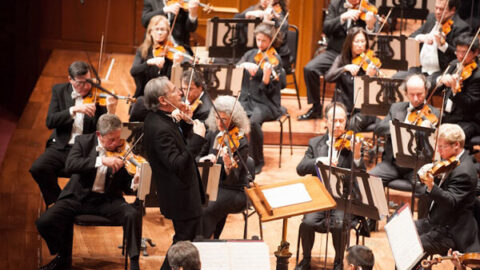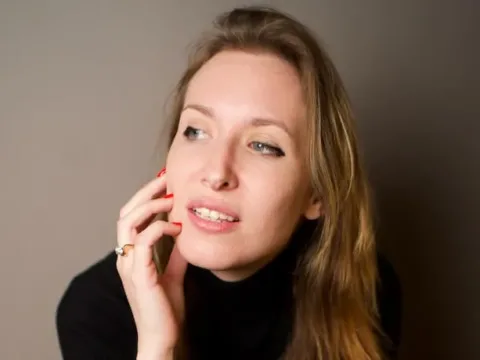 Henry Cowell, Lou Harrison and Edgard Varèse were truly mavericks in their day, challenging convention, creating new sound worlds and integrating non-Western music traditions into their works. Michael Tilson Thomas and his forces in San Francisco have led an historic effort to keep this music in front of audiences and memorialize it in recordings. These 4 works were all recorded in excellent live sound in 2010 and 2012.
Henry Cowell, Lou Harrison and Edgard Varèse were truly mavericks in their day, challenging convention, creating new sound worlds and integrating non-Western music traditions into their works. Michael Tilson Thomas and his forces in San Francisco have led an historic effort to keep this music in front of audiences and memorialize it in recordings. These 4 works were all recorded in excellent live sound in 2010 and 2012.

Cowell’s Piano Concerto sounds as challengingly contemporary today as it certainly did in its 1930 premiere. In three movements: “Polyharmony,” “Tone Cluster,” and “Counter Rhythm,” the short, 15-minute work is a showcase for Cowell’s inventive piano technique. Listeners will find all their favorite Cowell trademarks here: crashing tone clusters, finger numbing runs, pounding stark octaves, extreme leaps in register, tricky cross rhythms, and even the lilt of an Irish tune. The large orchestra is an equal partner in the exhilarating sound world of the work while at the same time frequently offering a lyrical, cooling contrast to the white hot piano.
Jeremy Denk has thankfully taken up this remarkable work, performing it not only in San Francisco but in New York as well. Previously only a Stefan Litwin/Michael Stern/Saarbrucken RSO performance from 1999 was (and still is) available on the Col Legno label. Litwin/Stern milk all the drama of the work in an equally bravura performance. If anything, Litwin is a bit more aggressive than Denk, attacking the opening cascade of notes in such a way that one wakes up and becomes riveted to the imaginative sounds. The Denk/MTT performance gets the nod for the demonstration quality sound and the electric live performance presence. But really, why would anyone not want two performances of this strikingly advanced but also accessible and, dare one say, fun to hear concerto?
 Cowell’s 1930’s Synchrony, an aborted “ multimedia sound-dance-and-lighting spectacular” for Martha Graham begins with a lonely, tonally ambiguous three minute long trumpet solo that contains the seeds for the often hazily impressionistic music that follows. Well, actually Debussy-like impressionism punctuated by tone clusters (used in sequence to provide some fascinating melodic lines), busy polyrhythms and imaginative and often delicate use of percussion. The work grows episodically from the solo to an ambiguous close from the ringing tam tam. A most fascinating work given a definitive performance.
Cowell’s 1930’s Synchrony, an aborted “ multimedia sound-dance-and-lighting spectacular” for Martha Graham begins with a lonely, tonally ambiguous three minute long trumpet solo that contains the seeds for the often hazily impressionistic music that follows. Well, actually Debussy-like impressionism punctuated by tone clusters (used in sequence to provide some fascinating melodic lines), busy polyrhythms and imaginative and often delicate use of percussion. The work grows episodically from the solo to an ambiguous close from the ringing tam tam. A most fascinating work given a definitive performance.
Only the fertile and imaginative mind of Lou Harrison could conceive an organ concerto like his from 1971-72. In five fairly brief movements (the longest just under 7 minutes), Harrison explores his fascination with Asian music, specifically Indonesian Gamelan and percussion. The orchestra consists of a sub section of pitched bells, mallets, celesta and piano and a larger section of non-pitched percussion ranging from massive gongs to rattles and snare drums.
Harrison takes advantage of his unusual resources, exploring the contrasts between the sustained tones of the organ and the more abstract sound of the non-pitched percussion. The bells and piano provide a “bridge” between the organ’s legato world and the percussion’s sharper sound. The Davies Symphony Hall’s magnificent Rufatti organ is a co-star in this work with its rich, dark and imposing sound that can turn dulcet sweet when called upon.
There is so much going on in this remarkable work that it practically defies description. Every movement provides a wonderful experience for those with a sharp ear and imagination. Paul Jacobs, one of the most talented and adventurous organists around, is a sympathetic and virtuoso soloist. Listeners are advised to take special note of the 4th movement “Cannons and Choruses;” it is three minutes of simply hypnotic, beautiful, haunting and spiritual music. You will find yourself hitting the repeat button often.
Varèse’s crazy, complex Amériques from 1927 completes this full disc. Tilson Thomas and the orchestra turn in a visceral, exciting performance of this wild and wooly soundscape. From the mystical opening section, sounding all the world like Le Sacre, to the wailing sirens (here nicely integrated into the texture unlike some performances, namely Boulez/Chicago where they are too soft or the Robert Craft/Columbia recordings where they stick out too much) and on to the driving primitive dance near the end, Amériques is a wild ride for sure. If it seems a bit dated compared to its disc mates, grab the Lyndon-Gee/Polish National Radio SO on Naxos for a fine reading of the original version for a greatly expanded orchestra. The all important winds and brass are spot-on magnificent in this live recording from March 2012, which really rivals the previous benchmark Dohnányi/Cleveland Decca recording.
Michael Tilson Thomas, and his virtuosic San Francisco Symphony demonstrate their command and love of all these mostly unfamiliar works and are particularly sensitive partners to the soloists in the concertante selections. Remember when recorded performances of works such as these were little more than poorly captured run throughs? Thankfully, those days seem to be distant, unpleasant memories.
“American Mavericks”
Michael Tilson Thomas
San Francisco SO
Jeremy Denk, Piano
Paul Jacobs, Organ
Cowell: Synchrony
Cowell: Piano Concerto
Harrison: Concerto for Organ and Percussion Orchestra
Varèse: Amériques (1927 version)
SFS Media 0056 | Buy on Amazon
–
Don Clark is a classical music enthusiast, free lance concert reviewer and blogger. Follow him on Twitter: @Donaldopato.
























